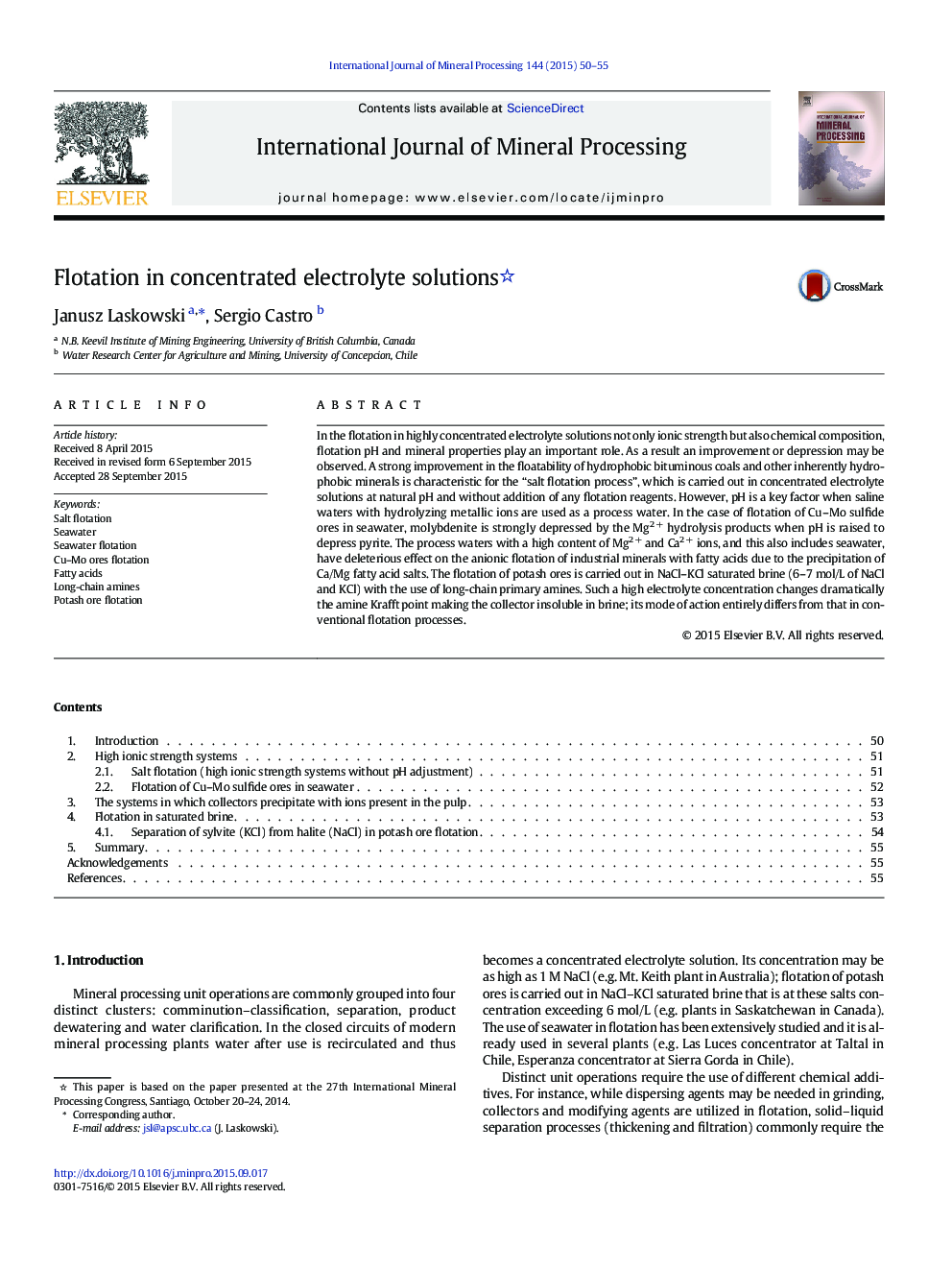| Article ID | Journal | Published Year | Pages | File Type |
|---|---|---|---|---|
| 213834 | International Journal of Mineral Processing | 2015 | 6 Pages |
•Attempt at classification of high electrolyte flotation systems•Salt flotation of inherently hydrophobic solids•Molybdenite depression in seawater by precipitating Mg hydroxy-complexes•Fatty acid flotation inhibition by precipitating Mg/Ca salts in seawater•Insolubility of long-chain amine collector in potash ore flotation
In the flotation in highly concentrated electrolyte solutions not only ionic strength but also chemical composition, flotation pH and mineral properties play an important role. As a result an improvement or depression may be observed. A strong improvement in the floatability of hydrophobic bituminous coals and other inherently hydrophobic minerals is characteristic for the “salt flotation process”, which is carried out in concentrated electrolyte solutions at natural pH and without addition of any flotation reagents. However, pH is a key factor when saline waters with hydrolyzing metallic ions are used as a process water. In the case of flotation of Cu–Mo sulfide ores in seawater, molybdenite is strongly depressed by the Mg2 + hydrolysis products when pH is raised to depress pyrite. The process waters with a high content of Mg2 + and Ca2 + ions, and this also includes seawater, have deleterious effect on the anionic flotation of industrial minerals with fatty acids due to the precipitation of Ca/Mg fatty acid salts. The flotation of potash ores is carried out in NaCl–KCl saturated brine (6–7 mol/L of NaCl and KCl) with the use of long-chain primary amines. Such a high electrolyte concentration changes dramatically the amine Krafft point making the collector insoluble in brine; its mode of action entirely differs from that in conventional flotation processes.
Graphical abstractFigure optionsDownload full-size imageDownload as PowerPoint slide
